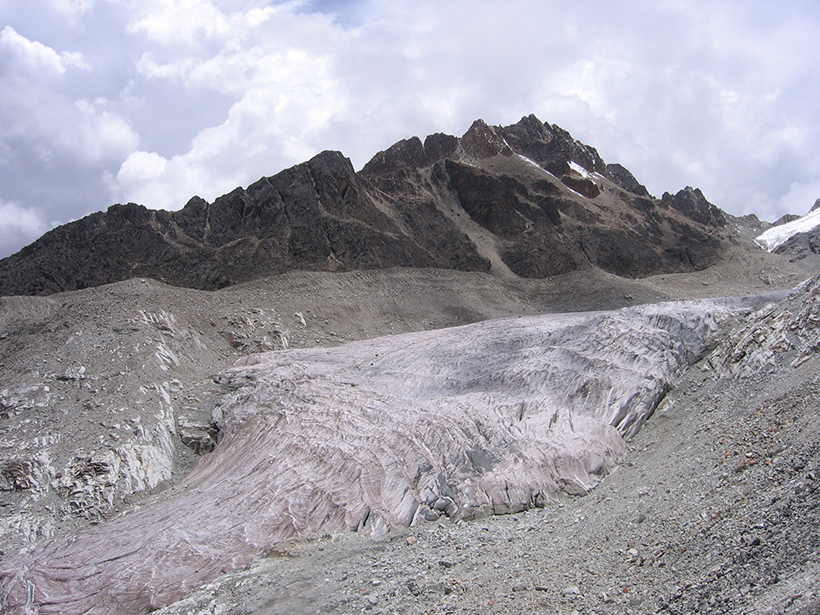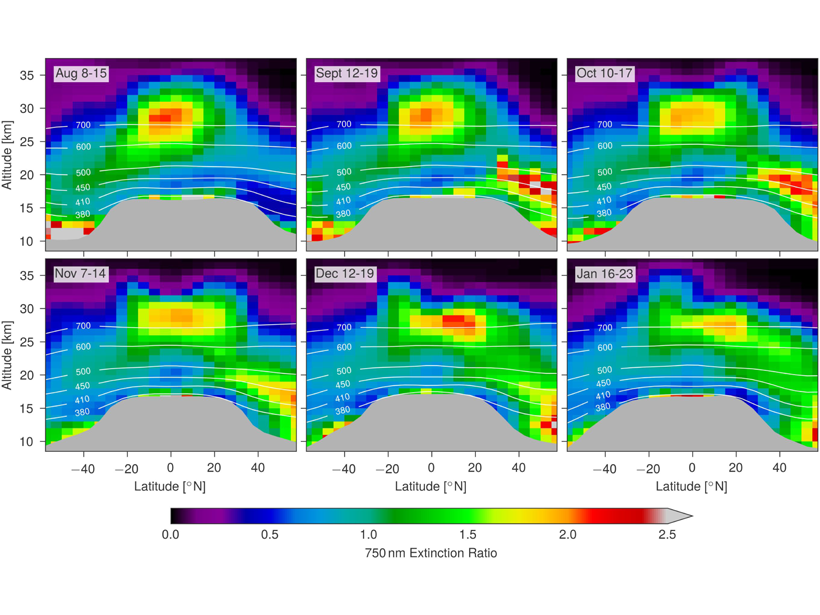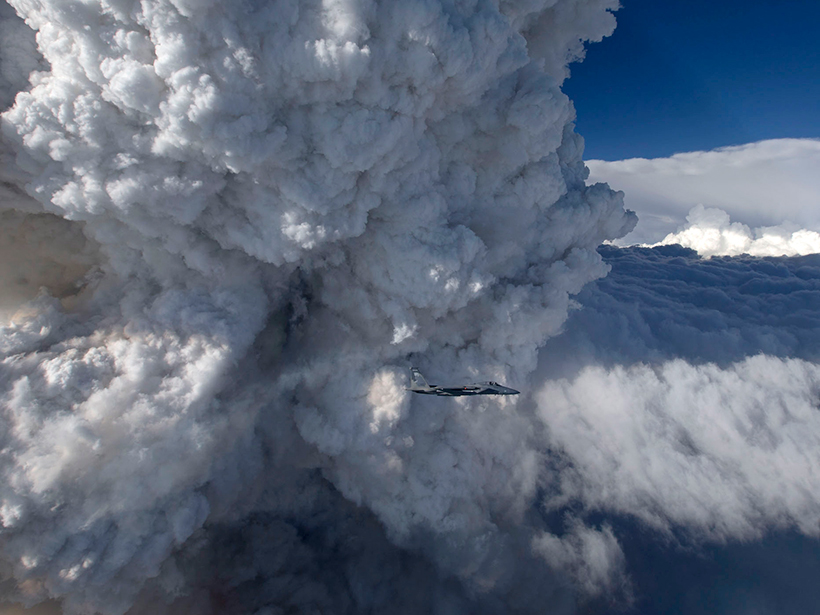The Philippines’ volcanology institute warns that a hazardous eruption of Taal is imminent. In the past, Taal’s eruptions have lasted months and even years.
aerosols & particles
Amazon Fires Contribute to Andean Glacier Melting
New research finds that black carbon emissions produced by fires in the Amazon cause glaciers in the Andes to absorb more sunlight and melt more.
Satellite Measurements of Stratospheric Forest Fire Smoke
Intense boreal forest fires in August 2017 caused smoke plumes that reached record levels in the stratosphere; satellite measurements show that the effects rivaled a moderate volcanic eruption.
Road Dust: A Health Hazard Hidden in Plain Sight
Legacy heavy metals from past industrial activity combine with traffic paint; asphalt; and bits of tires, brakes, and car parts to create toxic dust on our roadways.
Asbestos Fibers Thread Through Rocks and Dust Outside Vegas
Scientists found natural asbestos minerals in one of the fastest-growing counties in the United States. The health implications aren’t clear, nor are the impacts on development.
Wildfire Smoke Traps Itself in Valleys
Simulations show how wildfire smoke increases atmospheric stability inside some valleys, creating a feedback loop that prevents its dispersion.
Golden State Blazes Contributed to Atmospheric Carbon Dioxide
A new case study investigates causes and effects of California’s 2017 wildfire season.
The Coming Surge of Rocket Emissions
With the space industry’s rapid growth, rocket exhaust will increasingly accumulate in the atmosphere. How this accumulation might affect the planet is unknown—because we’re not taking it seriously.
Scientists Share Results of Dust Belt Research
Central Asian Dust Conference; Dushanbe, Tajikistan, 8–12 April 2019
What Wildfire Smoke Tells Us About Nuclear Winter
A cloud of smoke from 2017 Canadian wildfires was so huge that it self-lofted and stayed in the atmosphere for 8 months. Scientists used it as an example for climate simulations of nuclear warfare.










